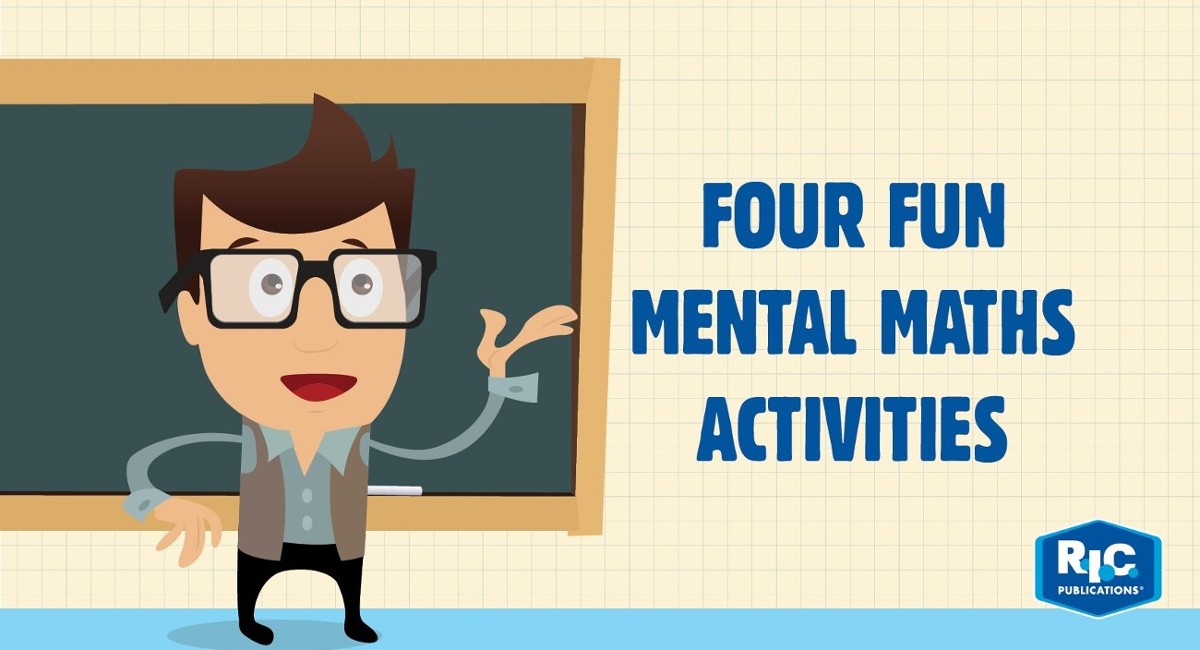- Tuesday 11 June 2019
- 0 Comments
Studies show that engaging the brain in mental maths exercises is linked to better emotional health. Engaging students in simple maths games can improve their fluency in essential mathematics skills and prepare them for more advanced concepts. Try the following activities to sharpen your students’ skills and help them enjoy mental maths!
Multiplication war
- Shuffle a deck of cards and deal them face down. Distribute each player an equal number. The picture cards can have a value of 10 and aces value of 11.
- Each player turns two cards face up, reads the number statement and offers the answer. For instance, if a player draws a 5 and 7, they say ‘5 x 7 = 35’. If the other player draws a 4 and 3, then they say ‘4 x 3 = 12’.
- The player with the larger products wins, and the four cards are placed at the bottom of their pile. Continue until one player runs out of cards.
Mental mystery
- A student counts out five small objects like coins, marbles or counters and then closes their eyes.
- Cover some of the five objects, leaving the rest uncovered. Ask the student to count how many objects they can see, and how many objects are covered.
- You can practise this game until students can quickly calculate simple equations. To make it more challenging, keep adding one additional object once the student has mastered that level. For older children, you can start with 10–20 objects.
Double and halve
If you want to upgrade your students’ multiplication skills beyond basics, teach them to multiply two integers when one is an even number. What do you need for this mental maths trick? Just a basic understanding of the two times tables.
- Instruct students to double the odd number and halve the even number.
- End this process when the even integer cannot be halved or when the equation becomes easy.
Here’s how the process goes. Let’s use 33 x 48 as an example:
- 33 x 48
- 66 x 24
- 132 x 12
- 264 x 6
- 528 x 3
- 3 x 500 = 1500 + 3 x 20 = 60 + 3 x 8 = 24
- 1584
101 and out
For this game, you’ll need a pencil, paper and one dice. The goal of the game is to score as close as possible to 101 without going over. Players take turns by rolling the dice. As you roll, you can either choose the number as a one or a ten. For example, if you roll a 2, it can be used as 2 or 20. Players keep a track of their total while playing. With this game, your students can apply more complex mental maths strategies, as they need to think critically about what number they need to roll next.
By using these mental maths tricks, your students will be able to solve various equations with ease and be ready to tackle complex content. For further mental maths practice, check out our New wave mental maths workbooks. Or register your interest today and receive your complimentary evaluation pack of these maths books!*
What games do you use to teach mental maths?
Tell us about them in the comments below.
* Terms and conditions: Samples only available to schools of 50+ enrolments. Offer not available outside Australia.
View our full range of maths educational resources, Mental Maths resources and Australian Curriculum Maths resources.
Related Posts:
